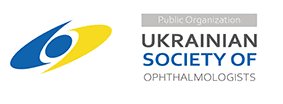Longitudinal visual functional recovery in compressive optic neuropathy in patients with primary pituitary microadenoma after endoscopic transnasal surgery
DOI:
https://doi.org/10.31288/oftalmolzh202132833Keywords:
skull-base tumors, pituitary asenoma, chiasmal syndrome, compressive optic atrophy, phases of visual functional recovery, endoscopic transnasal surgeryAbstract
Background: Neoplasms of the chiasmal and optic nerve region can result in compressive optic neuropathy with reduced visual acuity (VA), visual field defects and primary descending optic atrophy. Anterior visual pathway compression by the neoplasm is an absolute indication for surgical intervention.
Purpose: To review the phases of visual functional recovery in compressive optic neuropathy in patients with primary pituitary microadenoma after endoscopic transnasal surgery.
Material and Methods: We retrospectively reviewed the records of 225 patients who were treated for pituitary adenoma at the Romodanov Neurosurgery Institute from 2017 through 2019. All patients (450 eyes) had optic nerve/chiasm complex (ONCC) compression, reduced VA and/or visual field defects preoperatively and underwent surgical decompression of the ONCC. The time points for eye examination were day 1 or 2 after hospitalization (time point 0), and day 5, 6 or 7 (early postoperative examination; time point 1), month 1 (time point 2), month 3 (time point 3), month 6 (time point 4), and month 12 (time point 5) after surgery.
Results: In the majority of patients, decompression of the ONCC resulted in an improvement in or recovery of vision. There was a significant difference (p < 0.05) in VA and mean defect (MD) between time point 1 (VA: 0.74 ± 0.02; MD: 7.85 ± 0.29 dB) and time point 3 (VA: 0.8 ± 0.01; MD: 6.37 ± 0.28 dB). Moreover, there was a significant difference in MD between time point 1 (7.85 ± 0.29 dB) and time point 2 (6.91 ± 0.28 dB), and between time point 2 and time point 4 (6.08 ± 0.28 dB).
Conclusion: After surgical decompression of the ONCC, we observed the two phases of visual functional recovery: fast (as long as several days) and delayed (until 6 months). There was practically no further improvement in visual functions after month 6.
References
1.Foroozan R. Chiasmal syndromes. Curr Opin Ophthalmol. 2003; 14(6):325-1. https://doi.org/10.1097/00055735-200312000-00002
2.Kitthaweesin K, Ployprasith C. Ocular manifestations of suprasellar tumors. J Med Assoc Thai. 2008; 91(5):711-5.
3.Wadud SA, Ahmed S, Choudhury N, Chowdhury D. Evaluation of ophthalmic manifestations in patients with intracranial tumours. Mymensingh Med J. 2014 Apr; 23(2):268-71.
4.Sefi-Yurdakul N. Visual findings as primary manifestations in patients with intracranial tumors. Int J Ophthalmol. 2015 Aug 18; 8(4):800-3. DOI: 10.3980/j.issn.2222-3959.2015.04.28.
5.Guk M.O. [Diagnosis and comprehensive treatment of hormonally-inactive pituitary adenomas]. Dissertation for Doctor of Medical Sciences. Kyiv; 2017. Ukrainian.
6.Masaya-anon P, Lorpattanakasem J. Intracranial tumors affecting visual system: 5-year review in Prasat Neurological Institute. J Med Assoc Thai. 2008; 91(4):515-9.
7.Tagoe NN, Essuman V A, Fordjuor G, Akpalu G, Bankah P, Ndanu T. Neuro-ophthalmic and clinical characteristics of brain tumours in a tertiary hospital in Ghana. Ghana Med J. 2015; 49(3):181-6. https://doi.org/10.4314/gmj.v49i3.9
8.Serova NK. [Clinical neuroophthalmology. Neurosurgery aspects]. Tver': Triada; 2011. Russian.
9.Abouaf L, Vighetto A, Lebas M. Neuro-ophthalmologic exploration in non-functioning pituitary adenoma. Ann Endocrinol (Paris). 2015; 76(3):210-9. https://doi.org/10.1016/j.ando.2015.04.006
10.Lee DK, Sung MS, Park SW. Factors Influencing Visual Field Recovery after Transsphenoidal Resection of a Pituitary Adenoma. Korean J. Ophthalmol. 2018; 32(6): 488-96. https://doi.org/10.3341/kjo.2017.0094
11.Wang EW, Zanation AM, Gardner PA, et al. ICAR: endoscopic skull-base surgery. Int. Forum Allergy Rhinol. 2019 Jul;9(S3): S145-S365. https://doi.org/10.1002/alr.22327
12.Tron EZh. [Visual pathway disorders]. Moscow: Medgiz; 1955. Russian.
13.Kayan A, Earl CJ. Compressive lesions of the optic nerves and chiasm: pattern of recovery of vision following surgical treatment. Brain. 1975 Mar; 98 (1): 13-28. https://doi.org/10.1093/brain/98.1.13
14.McDonald WI. The symptomology of tumours of the anterior visual pathways. Can J Neurol Sci. 1982;9:381-90. https://doi.org/10.1017/S0317167100044280
15.Peter M, De Tribolet N. Visual outcome after transsphenoidal surgery for pituitary adenomas. Br J Neurosurg. 1995;9:151-7. https://doi.org/10.1080/02688699550041485
16.Powell M. Recovery of vision following transsphenoidal surgery for pituitary adenomas. Br J Neurosurg. 1995;9:367-73. https://doi.org/10.1080/02688699550041377
17.Jakobsson K, Petruson B, Lindblom B. Dynamics of visual improvement following chiasmal decompression. Quantitative pre- and postoperative observations. Acta Ophthalmol Scand. 2002 Oct;80(5):512-6. https://doi.org/10.1034/j.1600-0420.2002.800510.x
18.Findlay G, McFadzean RM, Teasdale G. Recovery of visionfollowing treatment of pituitary tumours: application of a new system of assessment to patients treated by transsphenoidal operation. Acta Neurochir. 1983;68:175-186. https://doi.org/10.1007/BF01401176
19.Marcus M, Vitale S, Calvert PC, Miller NR. Visual parameters in patients with pituitary adenoma before and after transsphenoidal surgery. Aust NZ J Ophthalmol. 1991;19:111-8. https://doi.org/10.1111/j.1442-9071.1991.tb00637.x
20.Kerrisson JB, Lynn MJ, Baer CA, Newman SA, Biousse V, Newman NJ. Stages of improvement in visual fields after pituitary tumor resection. Am J Ophthalmol. 2000; 130(6): 813-20. https://doi.org/10.1016/S0002-9394(00)00539-0
Downloads
Published
How to Cite
Issue
Section
License
Copyright (c) 2025 К. С. Єгорова, М. О. Гук, Л. Д. Пичкур, Л. В. Задояний, В. Н. Конах

This work is licensed under a Creative Commons Attribution 4.0 International License.
This work is licensed under a Creative Commons Attribution 4.0 International (CC BY 4.0) that allows users to read, download, copy, distribute, print, search, or link to the full texts of the articles, or use them for any other lawful purpose, without asking prior permission from the publisher or the author as long as they cite the source.
COPYRIGHT NOTICE
Authors who publish in this journal agree to the following terms:
- Authors hold copyright immediately after publication of their works and retain publishing rights without any restrictions.
- The copyright commencement date complies the publication date of the issue, where the article is included in.
DEPOSIT POLICY
- Authors are permitted and encouraged to post their work online (e.g., in institutional repositories or on their website) during the editorial process, as it can lead to productive exchanges, as well as earlier and greater citation of published work.
- Authors are able to enter into separate, additional contractual arrangements for the non-exclusive distribution of the journal's published version of the work with an acknowledgement of its initial publication in this journal.
- Post-print (post-refereeing manuscript version) and publisher's PDF-version self-archiving is allowed.
- Archiving the pre-print (pre-refereeing manuscript version) not allowed.












